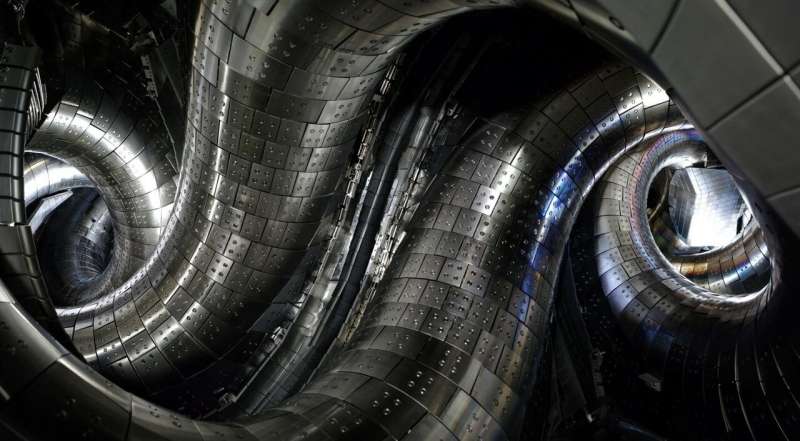Demonstration of alpha particle confinement capability in helical fusion plasmas

A team of fusion researchers succeeded in proving that energetic ions with energy in mega electron volt (MeV) range are superiorly confined in a plasma for the first time in helical systems. This promises the alpha particle (helium ion) confinement required for realizing fusion energy in a helical reactor.
The deuterium-tritium reaction in a high-temperature plasma will be used in fusion reactors in the future. Alpha particles with 3.5 MeV energy are generated by the fusion reaction. The alpha particles transfer their energy to the plasma, and this alpha particle heating sustains the high-temperature plasma condition required for the fusion reaction. In order to realize such a plasma, which is called a burning plasma, the energetic ions in the MeV range must be tightly confined in the plasma.
Numerical simulations predicted the favorable results of MeV ion confinement in a plasma in helical systems that have the advantage of steady-state operation in comparison with tokamak systems. However, demonstration of MeV ion confinement by experiment had not been reported. Recently, the study was greatly advanced by an MeV ion confinement experiment performed in the deuterium operation of the Large Helical Device (LHD), which is owned by National Institute for Fusion Science (NIFS), National Institutes of Natural Sciences (NINS), in Japan. In deuterium plasmas, 1 MeV tritons (tritium ions) are created by deuteron-deuteron fusion reactions. The tritons have the similar behavior with alpha particles generated in a future burning plasma.
The research group led by Assistant Professor Kunihiro Ogawa and Professor Mitsutaka Isobe of NIFS has performed MeV triton confinement experiment in LHD. The tritons confined in the plasma undergo secondary reaction and emit high-energy neutrons by fusion reaction with background deuterons (deuterium ions). The research group developed the detector for selective measurement of the high-energy neutrons to evaluate the MeV ion confinement performance. The high-energy neutrons were measured for different magnetic-field configurations. When the magnetic field axis is shifted inward, the MeV ion confinement shows better performance. The result obtained by this study proves the MeV ion confinement concept for the first time in helical systems. This in turn promises to shed light on the alpha particle confinement required for realizing fusion energy in a helical reactor.
More information: K. Ogawa et al, Energetic ion confinement studies using comprehensive neutron diagnostics in the Large Helical Device, Nuclear Fusion (2019). DOI: 10.1088/1741-4326/ab14bc
Provided by National Institutes of Natural Sciences





















